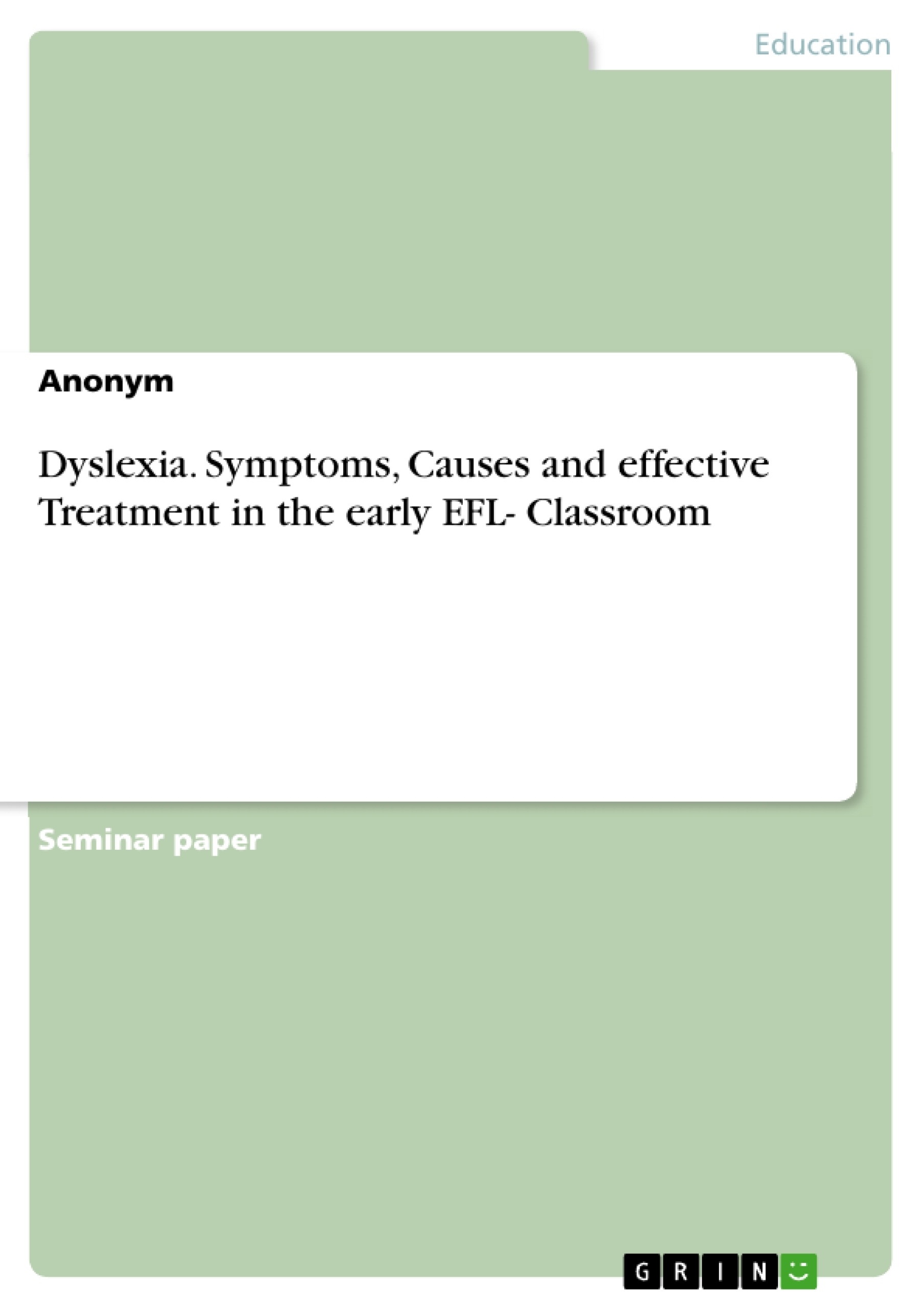Especially in the context of inclusion, teachers might be confronted with a heterogeneous student body. This means that students may have different levels of education and bring distinctive preconditions into school.
It may also be the case that some children are suffering from one of the most frequent developmental disorder: dyslexia.
This phenomenon hampers the successful literacy acquisition primarily due to neurobiological maldevelopment and may have a significant impact on the children’s academic evolution and their future life opportunities. Disregarding this disorder or improper handling would lead to future deficits in reading and understanding written material as well as issues with correct spelling and writing. Also, the successful learning of a foreign language such as English would nearly be impossible as the neurobiological deficits prevent the child from processing language properly. But because English is embedded in most of the school curriculums in Germany, the dyslexic child needs to be equipped with necessary prerequisites for learning languages.
For this reason, early intervention needs to be implemented. Various (pre-) school training programs are particularly useful for approaching written language. Once the child has internalized necessary language structures in their mother tongue, the way for learning another language is paved. Methods teachers use in their EFL- classroom significantly influence the learning outcome of the (dyslexic) students. Therefore, respective teachers should intensively familiarize themselves with the dyslexia disorder.
Inhaltsverzeichnis (Table of Contents)
- Abstract
- 1. Introduction
- 2. Phonological Awareness
- 3. The Reading Process: Dual- Route- Model
- 4. Symptoms of Dyslexia
- 5. Causes of Dyslexia
- 6. Treatment Approach: Training Program Hören, Lauschen, Lernen
- 7. Dyslexic Children in the EFL- Classroom: General Principles
- 8. Practice-Oriented Activities for Dyslexic Children in the EFL- Classroom
- 8.1 Training Pronunciation
- 8.2 Training Vocabulary
- 8.3 Training Listening and Listening Comprehension
- 8.4 Training Reading and Reading Comprehension
- 9. Discussion
- 10. Conclusion
- 11. References
Zielsetzung und Themenschwerpunkte (Objectives and Key Themes)
This term paper focuses on German students suffering from dyslexia and aims to provide possibilities to optimally support them with learning English. The paper analyzes the nature of dyslexia, its effects on reading and language development, and proposes practical strategies for teachers to implement in the EFL classroom.
- The importance of phonological awareness for successful reading acquisition
- The challenges faced by dyslexic students in the EFL classroom
- Effective treatment approaches and training programs for dyslexia
- Practical activities for developing language skills in dyslexic EFL learners
- The role of teachers in supporting dyslexic students in the EFL classroom
Zusammenfassung der Kapitel (Chapter Summaries)
- 1. Introduction: Introduces the topic of dyslexia in German students and its implications for learning English. This chapter sets the stage for the paper by highlighting the importance of addressing this learning disorder in the EFL classroom.
- 2. Phonological Awareness: Defines and explores the crucial role of phonological awareness in developing reading skills. This chapter emphasizes the importance of this meta-cognitive skill in understanding the challenges faced by dyslexic learners.
- 3. The Reading Process: Dual- Route- Model: Provides a detailed explanation of the Dual-Route-Model of reading, emphasizing the different pathways involved in reading and understanding written language. This chapter offers insights into the cognitive processes underlying reading, which are often disrupted in dyslexia.
- 4. Symptoms of Dyslexia: Explores the various symptoms of dyslexia, providing a clear understanding of the challenges faced by students with this learning disorder. This chapter helps readers identify the specific difficulties that dyslexic learners may experience in the EFL classroom.
- 5. Causes of Dyslexia: Discusses the various causes of dyslexia, providing a comprehensive overview of the neurobiological and environmental factors that contribute to this learning disorder. This chapter offers insights into the underlying mechanisms of dyslexia and the complexities involved in its diagnosis and treatment.
- 6. Treatment Approach: Training Program Hören, Lauschen, Lernen: Presents a successful and tested training program designed to prepare children for literacy acquisition. This chapter highlights the effectiveness of early intervention programs in improving phonological awareness and reading skills in dyslexic learners.
- 7. Dyslexic Children in the EFL- Classroom: General Principles: Explores general principles for supporting dyslexic children in the EFL classroom. This chapter provides teachers with practical advice on how to create a supportive and inclusive learning environment for students with dyslexia.
- 8. Practice-Oriented Activities for Dyslexic Children in the EFL- Classroom: Offers a range of practical activities tailored to support dyslexic learners in different areas of language development. This chapter provides teachers with concrete examples of how to implement effective teaching strategies in the EFL classroom.
Schlüsselwörter (Keywords)
This paper delves into the area of dyslexia, examining its effects on reading and language acquisition in the English as a Foreign Language (EFL) classroom. Key concepts explored include phonological awareness, the Dual-Route-Model of reading, neurobiological underpinnings of dyslexia, treatment approaches like the Hören, Lauschen, Lernen program, and practice-oriented activities for supporting dyslexic EFL learners.
- Citar trabajo
- Anonym (Autor), 2017, Dyslexia. Symptoms, Causes and effective Treatment in the early EFL- Classroom, Múnich, GRIN Verlag, https://www.grin.com/document/429740



